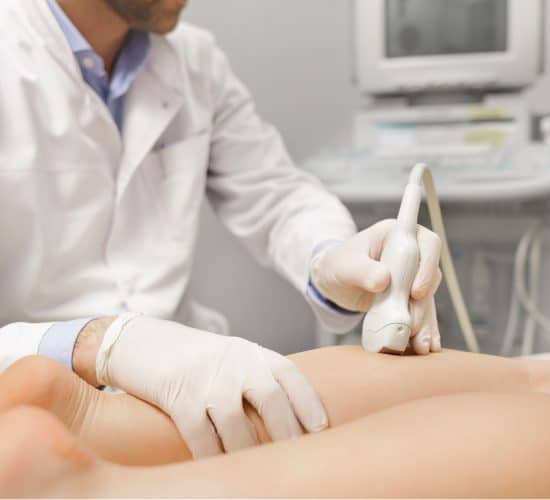
OVERVIEW
Deep vein thrombosis (DVT) is a condition in which blood clots form spontaneously in the deep veins of the lower or upper limbs.
Most cases of DVT are fortunately not life-threatening and can be treated with medication. These are usually cases involving the segment of the legs below the knee or the forearm.
However, patients with DVT extending above the knee or upper arm towards the heart may be in greater danger as the clots in the DVT can break off in pieces and travel into the heart and lungs resulting in a severe condition known as Pulmonary Embolism (PE). This condition is life-threatening as it prevents oxygen transfer to the venous blood and poses a significant risk of death.
SYMPTOMS
Symptoms include:
- Swollen and tender arms/legs: In the legs, the swelling and tenderness may start in the calf and then extend towards the thigh and groin. Whereas in the arms, it can start in the forearm and spread upwards towards the heart.
- Fast heartbeat (tachycardia)
Shortness of breath either in isolation or related to the limb swelling: This is a sign that the patient needs urgent and medical attention, as they may be experiencing a pulmonary embolism.
CAUSES/RISK FACTORS
Common causes and risk factors include:
- Long periods of immobility (e.g. long-haul flights or travel journeys)
- After major surgery involving the limbs, pelvis or abdomen,
- Obesity
- Dehydration
- Major trauma to the arms/legs
- Having a genetic predisposition to blood clotting, causing DVT
- Abnormal blood vessel anatomy (e.g. May-Thurner syndrome or Paget-Schroetter Syndrome)
- The presence of underlying cancer which can result in the blood being more prone to clotting (paraneoplastic syndrome)
DIAGNOSIS
Diagnosis is based on a high level of suspicion, including a risk factor history and ultrasound scans showing the presence of clots in the deep veins. Other associated investigations include a CT scan of the pulmonary arteries and a ventilation-perfusion scan if there is a suspicion of PE. Other investigations include a blood screen for pro-clotting factors and tumour markers if there is underlying suspicion of cancer.
OUR TREATMENTS
- Pharmacological treatments for DVT: Depending on health history, doctors will prescribe thinning blood medication (anti-coagulation) that prevents blood clot formation and dissolves existing blood clots for about six months.
- Minimally invasive mechanical treatments for DVT: If the DVT is extensive (e.g. extending up the thigh and into the pelvic veins), it is sometimes necessary to use a combination of mechanical devices and particular drugs to dissolve the clots. This process, known as thrombolysis, is usually done if the DVT is less than two weeks old and can be done as a minimally invasive procedure. The thrombolysis is a preventive measure for other long-term DVT complications including Post-Thrombotic Syndrome (PTS) and limb venous ulcers. Other additional treatments include the use of stents to keep the compressed veins open.

